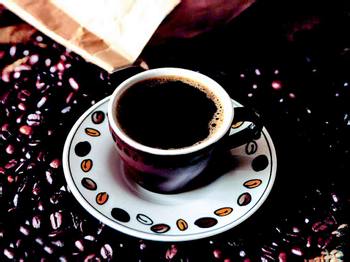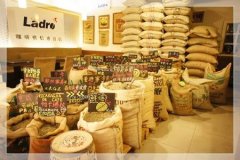What's the difference between Arabica coffee and Roberta coffee?
Arabica coffee
(transferred from www.molinarichina.com)
Arabica coffee (Coffee.Arabica): also known as Arabica coffee, its taxonomic position was determined by Linnaeus in 1753. It can produce Arabica coffee (C.Arabica) beans, which can be called high-quality coffee beans in the world and the only coffee that can be drunk without any ingredients.
The two best varieties of Arabica coffee (C.Arabica) are C.Typica and C.Burbon, but other varieties have also developed well. These include C.Caturra coffee grown in Brazil and Colombia, C.Mundo coffee from Brazil, C.Tico coffee widely grown in Central America and the famous Jamaican Blue Mountain Coffee (Jumaican C. Blue Mountain).
Arabica coffee (C.Arabica) trees are suitable for growing in countries with alpine terrain between the Tropic of Cancer and the Tropic of Cancer at an altitude of about 1000 meters above sea level. They grow on fertile hillsides with good drainage and require adequate sunshine and continuous rainy season and abundant rainfall. The temperature is 15 to 24 degrees seasonal, the temperature is mild but not very hot during the day, and less than two hours of direct sunshine. So farmers usually plant a lot of taller trees of similar varieties in coffee circles to shade. The temperature at night is about 15 degrees. If the temperature is too high, the coffee berries will grow too fast to produce small, strong, hard and high-quality Arabica coffee (C.Arabica). If it is too low and frost, it will freeze to death.
Arabica coffee (C.Arabica) trees are usually larger shrubs with green, oval leaves and poor resistance to rust. Its life span varies from 20 to 30 years (depending on production conditions and nursing), and then it needs to be replanted, usually harvested once every 3 to 4 years, with oval fruit and two flat coffee beans with zigzag grooves and a bit of peanuts. If there's only one, it's called peaberry pea-shaped coffee beans. It accounts for about 70% of the world's total coffee production.
Roberta Coffee
Roberta Coffee (Coffee. Robustra): more precisely, C. canephora Robustra (C. canephora var. robusta), which produces beans from C. robusta, contains 2 to 3 times more caffeine than C.Arabica because of its poor taste and is often used as a supplement to the production of instant coffee and Arabica coffee (C.Arabica) by the large coffee industry.
C. Robustra trees can grow in lower mountains and prefer warm equatorial climates, with temperatures stable in the range of 24 degrees to 29 degrees. It has strong resistance to rust and high yield. C. Robustra is a sturdy shrub or small tree, more than 10 meters tall, but with shallow roots. The mature period is as long as 11 months, and the shape of the beans of C. Robustra is more round, the middle side of the fissure is a little swollen, and the groove is very straight, much like half a soybean. It mainly occurs in central and western Africa, throughout Southeast Asia and in the C. Conilon region of Brazil.

Important Notice :
前街咖啡 FrontStreet Coffee has moved to new addredd:
FrontStreet Coffee Address: 315,Donghua East Road,GuangZhou
Tel:020 38364473
- Prev

Six conditions for standard good coffee
The roasting of coffee beans pursues the perfect combination of six conditions: color, aroma, sour, sweet, bitter and body (the so-called round and mellow texture). In addition to the "color" is the quality of the appearance of coffee beans, the other five conditions are completely displayed between the tongue full of taste buds and the cheeks such as the upper and lower jaw, so the next time you drink coffee, don't rush to add sugar and cream. Try
- Next

Colombia is the best place to grow coffee beans.
The Republic of Colombia is located in the northwest of South America. It is bordered by Venezuela in the northeast, Brazil in the southeast, Peru and Ecuador in the south, Panama in the northwest, the Pacific Ocean in the west, the Caribbean Sea in the north and the ocean in the east. It is the only two-ocean country in South America. Colombia is not only the gateway between South and North America, but also connects Europe and Pacific Rim countries by sea.
Related
- Beginners will see the "Coffee pull flower" guide!
- What is the difference between ice blog purified milk and ordinary milk coffee?
- Why is the Philippines the largest producer of crops in Liberia?
- For coffee extraction, should the fine powder be retained?
- How does extracted espresso fill pressed powder? How much strength does it take to press the powder?
- How to make jasmine cold extract coffee? Is the jasmine + latte good?
- Will this little toy really make the coffee taste better? How does Lily Drip affect coffee extraction?
- Will the action of slapping the filter cup also affect coffee extraction?
- What's the difference between powder-to-water ratio and powder-to-liquid ratio?
- What is the Ethiopian local species? What does it have to do with Heirloom native species?

